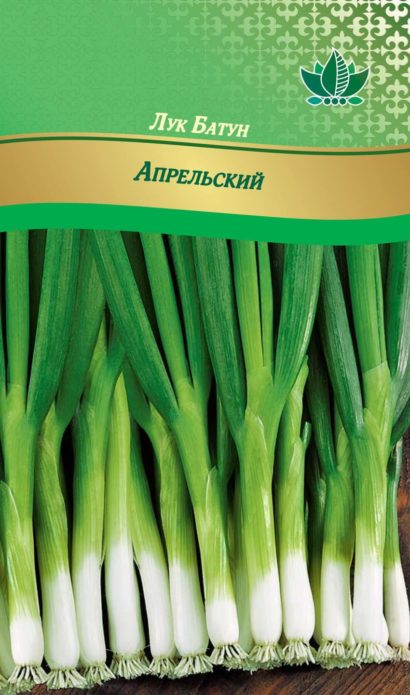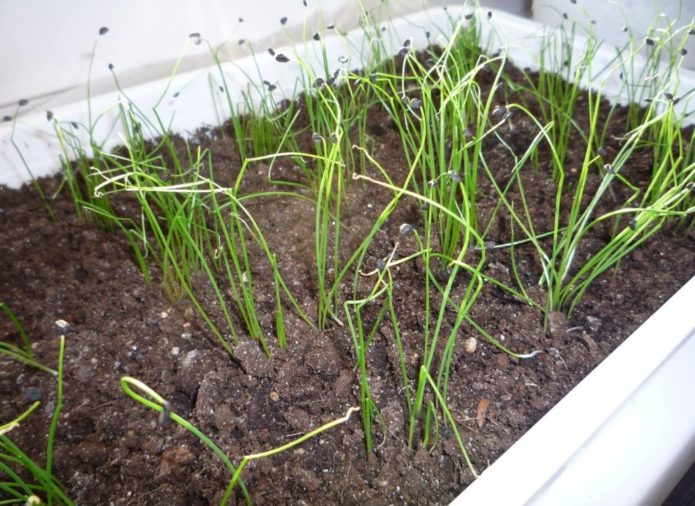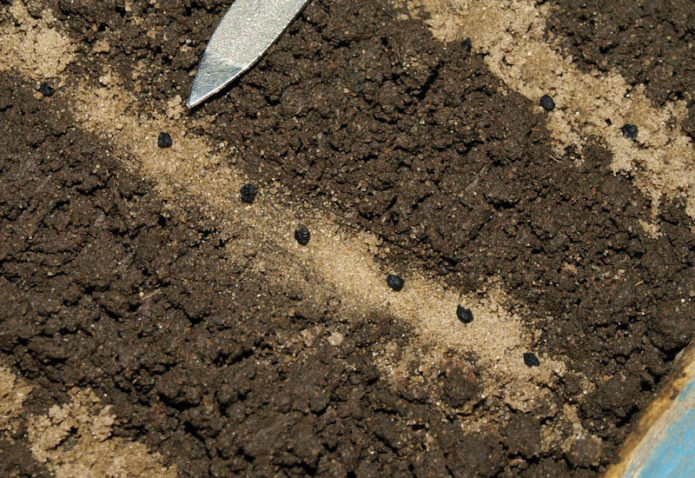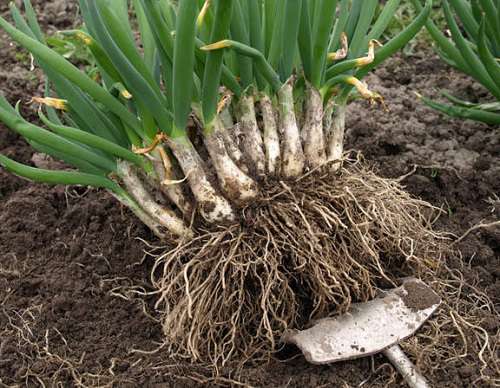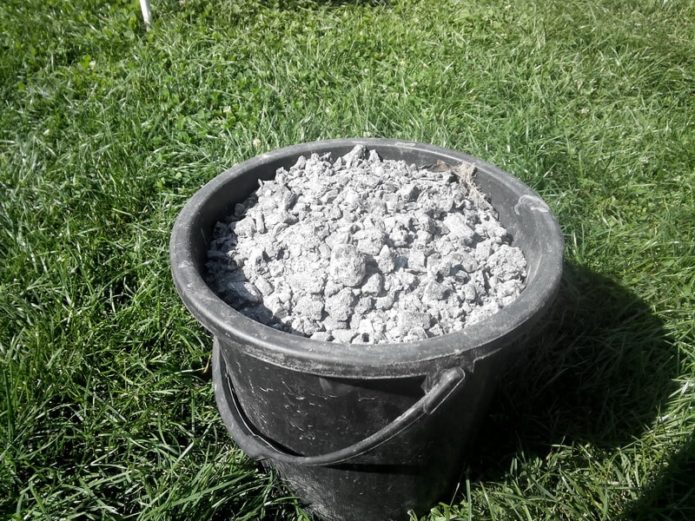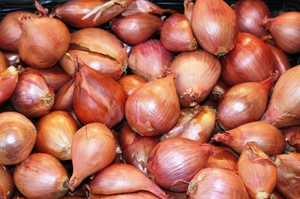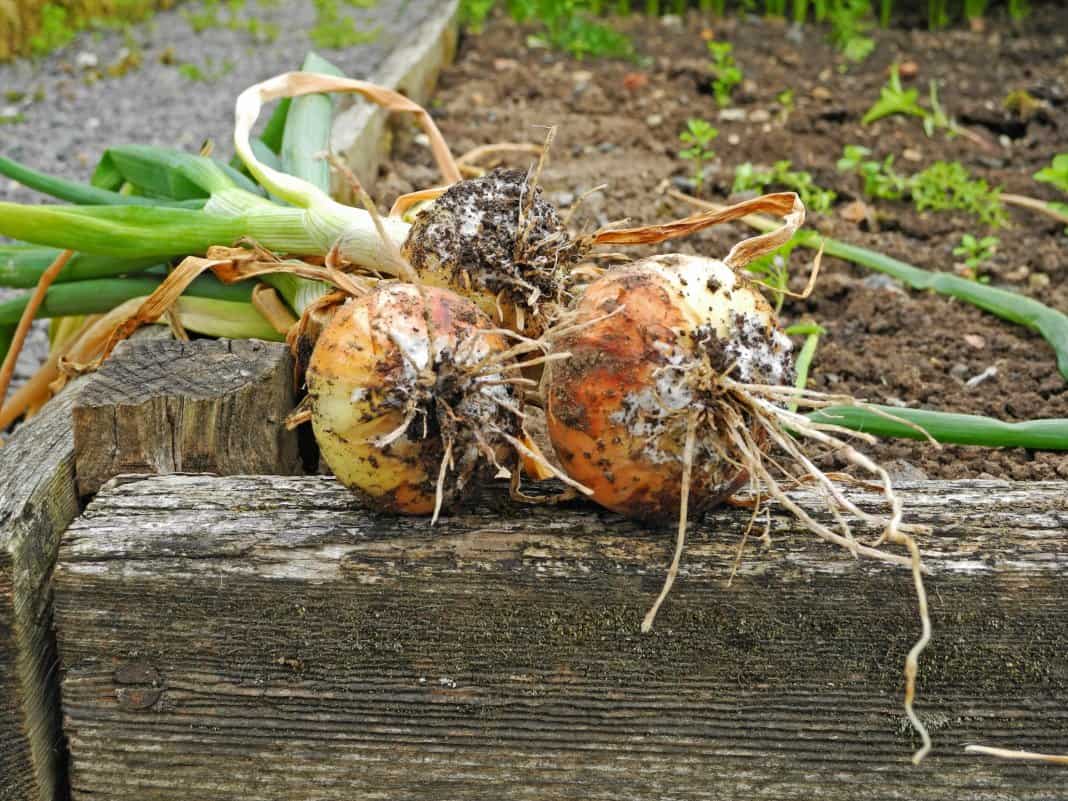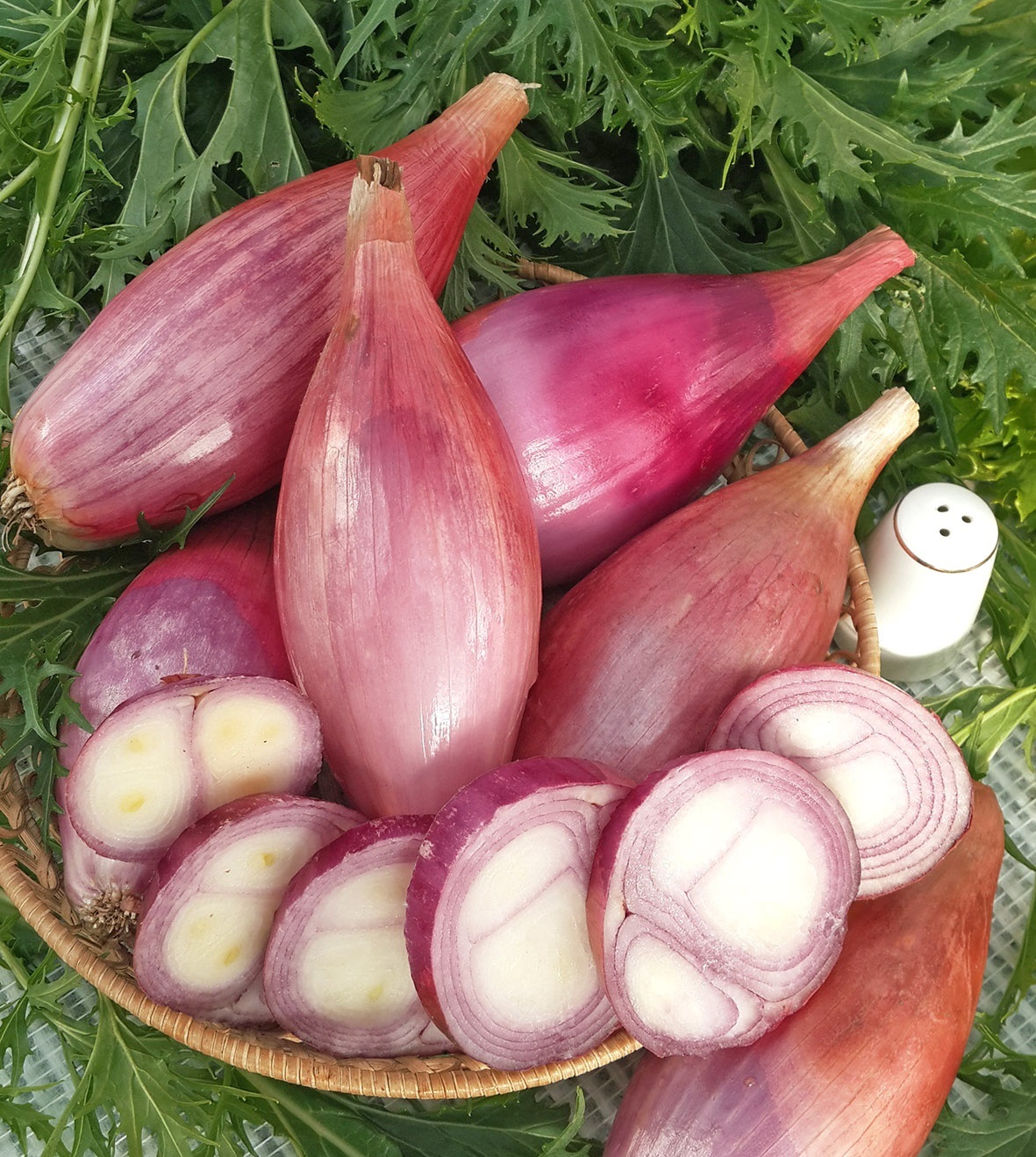Batun onion is a representative of perennial vegetables grown for the sake of vitamin greens. This is an unpretentious plant that can live almost everywhere, and only in the Far North there are small problems with its agricultural technology. The trampoline is popular primarily because its harvest is one of the first in the garden.
Content
The choice of seeds of onion-batuna for planting seedlings and for sowing in open ground
The onion in the garden looks almost like onions, but in fact it does not have the usual onion, only some thickening is present. In his food, they use fisty leaves, which contain many vitamins and other substances necessary for the body. The batun is also found in the wild, for example, in Siberia. Most amateurs plant it in the gardens, because, having planted it once, you can harvest without much worries for several years in a row throughout the season.
Several dozen varieties of this onion are known, but the differences between them are not very significant. They consist in the yield, maturation of the feather and the sharpness of its taste. There are differences in disease resistance. All varieties of Batuna registered in the State Register of the Russian Federation are approved for cultivation in all regions.
The most famous varieties are April and Maisky; their names speak for themselves. The mass of one plant of the April onion reaches 300 g, the taste of the feather is semi-sharp. Maisky has a sharper taste, the leaves are thinner. The Long Tokyo variety is relatively young. Its yield is not very high, but the variety has the highest winter hardiness (however, any varieties of batun are not afraid of the cold).
Small plants of the Tenderness variety, although the overall yield per planting area is not bad. The mass of this onion barely reaches 50 g. The Russian winter onion has a very small bush size, but its taste is assessed as excellent. The leaves of the Seryozha onion are much larger, and their color is not pure green, but bluish.
Seeds or seedlings?
All available varieties can be grown both by sowing seeds in a garden bed, and through seedlings. A reasonable question arises: why do we need seedlings, if the batun has been growing in one place for many years, and it sprouts well from sowing seeds. The fact is that sometimes the batun is grown in an annual culture. Then, having prepared the seedlings and planting them in the garden in early spring, you can get a particularly early harvest. The bushes are intensively used for one season, and then they are pulled out, and new ones are planted next year. Obviously, in this method of cultivation, it is necessary to choose those varieties that give massive plants that can immediately give the maximum harvest.
If there is no need to get a very early harvest, and there is no time to deal with seedlings, they sow the batun with seeds. In this option, you can choose any varieties that suit your taste. But the maximum harvest can be expected only in two to three years.
Surprisingly, the seedling method is very common, especially in eastern countries. This is due not only to the fact that in this way you can get a decent harvest already in the same year. The fact is that over the years, diseases accumulate on the garden bed, pests start, and it is much less likely to accumulate this bouquet in one summer. Since there are varieties that differ in excellent taste, but at the same time are not very disease-resistant, growing them in seedlings is quite understandable.
Planting onion for seedlings and in the open field
In principle, you can sow batun seeds into the soil at any time, except in winter.... It is difficult, however, to get decent seedlings in the hottest months. Therefore, traditionally, the seeds of this onion are sown in spring or autumn. Podzimny sowing is also possible. The specific period does not matter. In spring, seeds can be sown as soon as the soil thaws, that is, in most regions in certain days of April. From such a sowing, the first crop can be harvested by the end of summer, and next year it will be quite decent.
Video: spring sowing of a batun
They sow batun in summer (more precisely, at the very end of summer). Then, before the onset of frost, the seeds will have time to germinate, take root, and real growth, which allows cutting off the leaves, will occur only next year.
True winter sowing is carried out before severe frosts (in November) in a pre-prepared bed. The approximate timing of such sowing is determined by the temperature of the soil: it should pass towards negative values. The seeds should not germinate in the current year, but in early spring, when the soil thaws, shoots will appear. So that the seeds do not die during accidental thaws and subsequent frosts, the garden bed is well mulched, and then covered with branches, coniferous spruce branches, etc. In the spring of next year, the harvest will be still meager, but by summer the leaves will grow back to normal size.
If the seedling method is chosen, seeds at home can be sown even in January, but in winter it is difficult to provide a light regime in an apartment. Therefore, sowing for seedlings is more often carried out in March-April, the batun is transplanted into the garden in early summer, and the main crop is cut in August and September.
Lunar landing date
Those gardeners who are guided by the Lunar calendar know that sowing various types of onions for growing greens is best done when the night star is under the signs of Water. If so, then in 2019 favorable sowing dates are:
- February 7 and 8;
- 6, 7, 30 March;
- April 2, 20, 24, 25, 29;
- May 1, 21, 23, 26, 27;
- June 1, 18, 23, 24, 29;
- July 21, 22, 26, 31
- August 17, 22, 26;
- September 18, 23, 24, 29;
- October 16, 20, 26.
Preparation of onion seeds for sowing
If a batun is already growing in the garden, you do not need to buy seeds, they are easy to collect from plants in the fall. Starting from the 2nd year, the batun blooms profusely. Usually the arrows break out, but if you need seeds, you can leave 1–2 pieces and wait for them to bloom, the seeds will tie and turn black. Having pulled out the plant, it is brought into the room and hung over any container. As it dries, the seeds will spill out into it.
Onion seeds are stored for no more than two years!
In principle, the seeds do not need to be prepared for sowing at all, but then the seedlings will appear very stretched out, and even for a long time. True, it is worth disinfecting them by holding them for half an hour in a pink solution of potassium permanganate. It is only important to take into account that the garden in which unprepared seeds are sown must be systematically watered. If this is not possible, you have to tinker a little. Then the seeds will sprout earlier and more amicably.
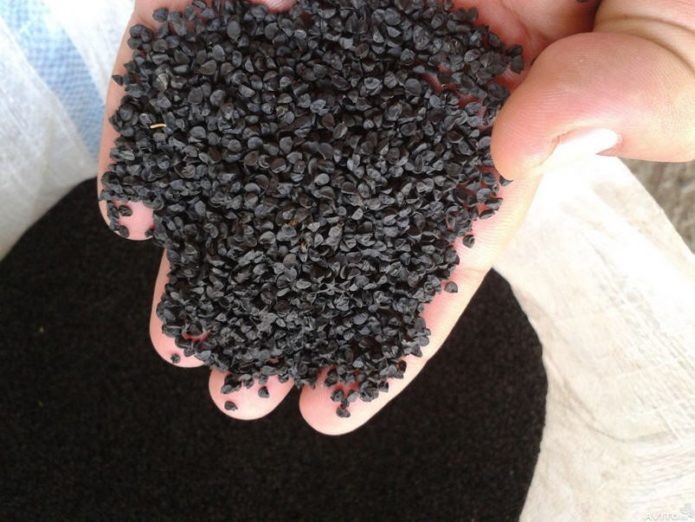
The seeds of the batun are the same as those of other bows, except that they can be slightly smaller.
Preparation consists in the fact that after disinfection, the seeds are washed and soaked in a wet cloth.The cloth is kept in water for a day at a temperature of 20-30 aboutC, while changing the water three times. Then the seeds are dried until flowable and sown.
How to sow onion onion for seedlings and in open ground correctly, features of seedling care
Sowing seeds is not difficult, but at first you need to constantly keep an eye on the seedlings. This is especially true for home growing seedlings.
Sowing seeds for seedlings
Separate cups are not used for the batun, its seedlings can be grown in common boxes of any size, with a height of 8 cm.A mixture of equal amounts of turf soil and humus is used as soil, to which ash is added (half a liter per bucket of soil). The grooves are made only 1 cm deep, they are spilled with water, the seeds are sown, but after covering them with soil, sand is also poured into the box with a layer of 2 cm. The box is covered with glass or foil, from prepared seeds at 18-20 aboutShoots appear in 10-15 days.
Seedling care is similar to that of many vegetables. When seedlings appear, lower the temperature to 10-12 aboutC, and only after a week they raise it. But, unlike many crops, further cultivation should be carried out only at 14-16 aboutIt is very difficult to create in an apartment environment, therefore they try to grow onion seedlings in cold greenhouses. Additional lighting is also required. Seedlings are rarely watered and in small doses. They are fed twice with superphosphate and ash. Thickened seedlings are thinned out, leaving about 3 cm between them.
Planting is carried out in late May or early June, in holes according to a 12 x 15 cm scheme.Thus, it turns out that even for seedling growing of this onion, it is better to equip a garden bed in the garden, covering it with a film: it is very difficult to withstand the necessary regime at home.
Sowing seeds in the garden
If a long-term cultivation of a batun is supposed, the seeds are sown directly into the open ground. This can be done in early spring, summer, and before winter. When sowing, it should be remembered that batun grows poorly on acidic soils, they must be corrected. The best soils are sandy loam and loam; it is absolutely necessary that the bed is well lit. It is dug up in advance with an introduction of 1 m2 buckets of humus, handfuls of ash and 15–20 g of azofoska.
The seeds are sown in the grooves, previously shed with water, 25–30 cm are left between the grooves. The sowing depth is about 2.5 cm. In warm soil, seeds germinate well, in cold soil, they are stretched. The garden bed must be mulched. After emergence, when it becomes clear which plants are stronger, they are thinned out so that there is 10-12 cm between shoots.
How to transplant an onion-batun to a new place
The easiest way to reproduce a batun onion is by dividing an adult bush: if there is already an adult batun in the garden, you should not start a story with seeds. The bushes can be divided at any time, preferably in August. The bush just needs to be carefully removed from the ground, divided into parts and planted on a new fertilized bed. During this procedure, the rhizomes of malicious weeds are simultaneously extracted: it is usually difficult to do this in the garden bed.
The operation technique is simple, it is important to pre-water the bush and try to dig it out with minimal damage to the roots. He also shares his hands, but using a knife is easier. It can be divided into single bulbs and planted in larger pieces. The scheme of their landing is usual, no deepening is required.
Caring for planting onion-batuna
Difficulties in caring for plantings can be only at the initial stage, then the batun practically grows by itself. Depending on how long they are going to grow onions in the garden, the seedlings are thinned more or less. In the perennial version, they are thinned several times, using plucked out plants in cooking.In the first year, it is especially important to monitor the appearance of weeds and loosen the garden more often. The rest of the work is completely ordinary.
Watering
The trampoline will not die without watering, but a good harvest of delicate leaves can be expected only when the soil is always moist. If there is no rain for a long time, and the owner forgets about the batun, the leaves become rough and tasteless. You can water with water of any temperature, consumption - about a bucket per 1 m2, mode, in case of normal weather, - 1 time per week.
A few days before the mass cutting of the feather, the batun must be watered in a reinforced version.
The batun can also be watered from a watering can directly over the leaves, but you need to understand that they can break from a high pressure, so it is better to pour water at the root. After the bushes grow strongly, loosening after watering will be difficult, and the garden bed is mulched with humus to retain moisture.
Top dressing
Frequent feeding of the batun is not required, but they are especially important after a massive harvest. The plantings of the first year are fertilized with infusion of mullein (1:10), as well as with ash, which is sprinkled on the garden bed and shallowly embedded in the soil. And before feeding, and after it, the onions must be watered.
Subsequently, the infusion of mullein is also used, but it is further diluted by half, and ash is poured "from the heart". If it suddenly becomes noticeable that the feathers stop growing and begin to turn yellow, the plants should be watered as soon as possible with a urea solution (1 tablespoon per 10 liters of water).
Harvesting and storage
Several feathers can be cut off to the table at any time, but, in addition, it is customary to cut the baton almost completely several times per season. This is done when the height of the bush is not less than 25-30 cm. The batun, which is hardly looked after, withstands 2-3 such cuts in the season, and in case of good care - 4-5. The maximum yield occurs in the 3rd or 4th year of life.
With mass pruning, at least a few of the youngest feathers should be left on the plant: this will make it easier for the bush to recover. With leaves, the batun is also left in the winter: the last cut is planned for the beginning of October. In winter, the leaves will die, but until winter they will keep the batun in a viable state. When arrows appear, if seeds are not required, they are immediately removed.
All cutting operations are best done with a knife or scissors, the leaves are cut off the ground. The crops are stored in the refrigerator in plastic bags. Do not close them tightly. Most onion varieties keep the leaves for only a week and a half; if the harvest is large, the leaves can be cut into convenient pieces and stored in the freezer. After defrosting, the batun can even be put into salads, and it is perfect for preparing various dishes.
Video: caring for a batun onion
Batun onion is a representative of perennial onions grown for feathers. Its agricultural technology is very simple, and you can find a batun in almost any climatic region.
